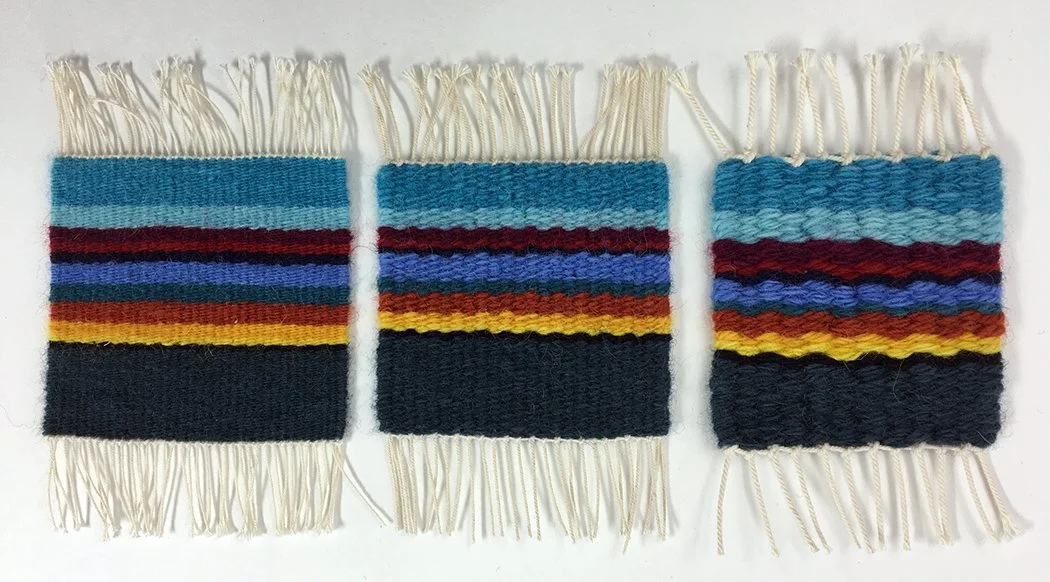Have you reached that point in tapestry weaving where you feel you have a decent or even excellent grasp of technical issues but you are unsure how to design your own images? This happens to almost all of us, so you’re not alone. Designing is simply a skill and it can be learned.
There is a lot of pressure in the art world. How many messages do we get telling us that you have to be born with some sort of special talent or that you have to go to art school to make “good” art? Those messages are everywhere in our culture and it is easy to let them keep you from creating.
The truth is that designing for tapestry or any art medium is simply a skill and that skill can be learned. It takes a lot of practice, but anyone can improve their design skills with some knowledge and practice. I created the Design Solutions for the Artist/Weaver courses with this in mind. I want tapestry weavers to understand that they can make the images that live in their imagination. And if your imagination is having difficulty even coming up with those images, there are wonderful ways to get past this hurdle also.
I am running my Design Solutions course in a live format starting this month. I’ll be supporting the group as we work through ideas, questions, and learn about design concepts and how to apply them to tapestry weaving. I call this learning to think like a tapestry weaver. One of the biggest advantages of joining the class right now is the consistent interaction with other students and myself. It can be so heartening to hear that other people are struggling with the same things you are and to work through solutions together.
There are six modules in the course, one each month from January through June. For this run of the course, the material is all open and you’re welcome to work through it at any speed you want. I’ll be focusing on the material for the current month including live sessions about that module’s material.
The modules contain these segments
color and design principles: discussion of important color theory and design principles and how they apply to tapestry weaving specifically
a artist interviews with influential and inspiring fiber artists
behind the scenes spots to help us understand how a tapestry practice flows from yarn to finished product
maintaining your practice: ways to support your work both in terms of getting past the voices of judgement that stop us as well as practical tips for weaving in general
nuts and bolts: technical details about tapestry weaving including things like how to match sett, materials, and ideas as you design
live question and answer sessions each month along with some real-time typed meet-ups in the course
I’d love to invite you to join the class. You can find out more in the trailer videos below as well as on my website HERE.
I made two different trailers for this course. The first one below describes the course. If you get the blog via email you can view the video HERE on YouTube.
The second trailer video for the course is about the interviews that are one of the pillars of learning in the class. This video is fun and includes clips from four of the six interviews included in Season 1. If you get the blog via email you can watch the video HERE.
The website page for this course with FAQs and more information is https://rebeccamezoff.com/design
You can view the course in my course platform, Pathwright HERE. The first step in the course is open for you to view without registering. Just click on the first step that says Welcome Video. The Preview part of the course will allow you to see all the steps in the course.
“So much to learn!!!
Everything I watch or read from the course so far links to more resources to watch and read and act up. It’s amazing and wonderful.”

